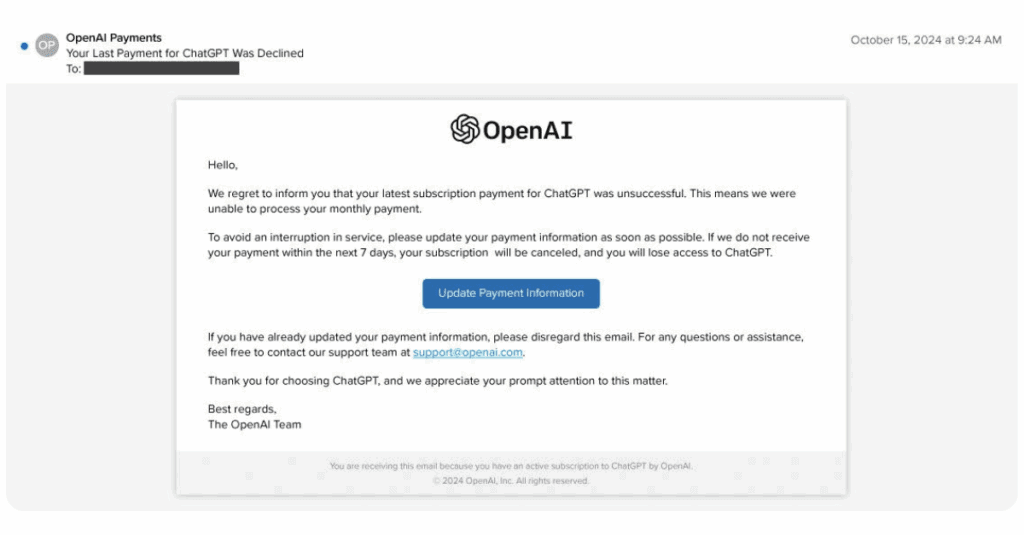Artificial Intelligence (AI) has quickly become a powerful tool for businesses—transforming how we communicate, analyze data, and automate tasks. From AI-driven customer support chatbots to predictive analytics in HR and sales, companies across Northeast Ohio and beyond are embracing smarter tech to stay ahead.
But you’re not the only one benefiting from AI.
Cybercriminals are using those same technologies to launch more convincing, more targeted, and more dangerous attacks. The same tools that help your team move faster and smarter can now be weaponized against you.
In this post, we’ll break down the most pressing AI risks in cybersecurity, how cybercriminals are using AI, and what you can do to protect your business.
AI Isn’t Just for Productivity Anymore
AI is no longer just about automating spreadsheets or writing social posts. Cybercriminals are now leveraging AI systems to scale attacks with alarming speed and sophistication:
- Phishing emails are now perfectly written—no typos, no strange grammar. Just realistic messages designed to trick even the savviest users.
- Voice cloning and deepfakes can impersonate executives in emails, voicemails, or even video calls.
- Chatbot scams can hold real-time conversations, making the attack feel more believable.
- AI automation lets hackers launch thousands of attacks at once, even if they don’t have much technical skill.
What does this mean for your business? Old security systems and tactics aren’t enough anymore.
How AI is Changing Phishing Attacks Forever
Gone are the days when you could spot a phishing email by its poor grammar. Today’s AI-generated emails are:
- Flawlessly written and often indistinguishable from real internal communications
- Highly targeted using info scraped from LinkedIn, your website, or even past breaches
- Urgent and manipulative, asking for sensitive files or payments with convincing context
Red flags to watch for:
- Emails that feel “too perfect” or come with strange urgency
- Slightly misspelled domains or inconsistent formatting
- Requests for credentials or payments that fall outside your usual process
- Links that look right but point somewhere else when you hover
Social Engineering Attacks, Upgraded
Social engineering is nothing new—but AI tools make it stronger. With just a few data points, attackers can build detailed profiles of your employees and craft messages that feel personal and trustworthy.
Ways a Cybercriminal Can Use AI for Social Engineering:
- Use AI technology to scan public social media profiles and company bios
- Clone a leader’s voice and leave a voicemail asking for a wire transfer
- Create a chatbot conversation posing as someone from your security team
- Improve their attacks over time using AI-based feedback loops

Deepfakes: Seeing Isn’t Always Believing
Deepfakes are synthetic videos or audio clips that convincingly mimic real people. They’re not just viral internet oddities anymore—they’re cybersecurity threats.
To show you how convincing deepfakes can be, we created a video of Jay Mellon, our Co-founder and CEO.
Watch for these signs of a potential deepfake:
- Unnatural blinking, movement, or lip-syncing
- Audio that feels out of place, like a voice that’s too clean or robotic
- Weird lighting or shadows, or body gestures that don’t quite track
- Context that doesn’t add up—a video that feels out of character or comes at an odd time
How to Protect Your Business From AI Threats
The good news? Just like AI empowers cybercriminals, it can empower you too—if you stay ahead.
Here are five key ways to defend against AI-driven cyber threats:
Strengthen Access Controls
- Use multi-factor authentication (MFA) everywhere
- Limit unauthorized access to sensitive data based on user roles
Train Your Team
- Conduct regular phishing campaign simulations
- Teach staff how to spot generative AI content and deepfakes
Upgrade Email Security
- Implement domain protection protocols (SPF, DKIM, DMARC)
- Use AI-powered email filtering to catch spoofed or manipulated messages
Monitor & Detect in Real Time
- Use behavior-based monitoring tools that flag unusual activity
- Ensure 24/7 endpoint and network surveillance
Keep Policies & Response Plans Up to Date
- Regularly review and update your incident response plans
- Reflect AI-specific risks in your cybersecurity policies
Download Our Free Resource

Smarter Tech, Smarter Threats: AI + The Cybersecurity Landscape
AI-driven cyberattacks are getting harder to detect—make sure your team knows what to look for. Download our easy-to-follow guide and keep it visible in your office or breakroom.
Final Thoughts: Don’t Face AI Threats Alone
AI is changing the cybersecurity landscape—but you don’t have to face it alone. AtNetPlus helps businesses across Northeast Ohio navigate the evolving threat landscape with smarter tools, deeper visibility, and real human support when it matters most.
If you’re unsure whether your current defenses are enough to stop AI-driven attacks, we’re here to help.
Let’s start with a conversation.
Contact us today to learn how AtNetPlus can strengthen your cybersecurity posture in the age of AI.

